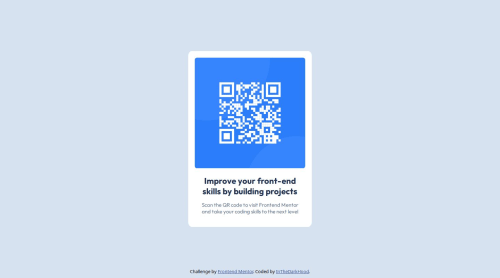QR Code Component Solution Using HTML & CSS

Solution retrospective
I started out by making things a lot more complicated for myself, when the solution was very simple. I will make sure to break down the project and create more achievable and bite-sized tasks for myself.
Please log in to post a comment
Log in with GitHubCommunity feedback
- @ZakJam
To ensure that your web page maintains good proportions when scaling up or down, you can make several improvements and adjustments to your HTML and CSS. Here are some suggestions and corrections to help with responsiveness and overall design:
Suggestions for HTML and CSS Use Responsive Units:
Instead of using fixed units like px for padding, margins, and fonts, use relative units like em, rem, %, or vh/vw to make your design more responsive. Add a Responsive Container:
Use a container to limit the maximum width of the content to prevent it from stretching too much on large screens.
Marked as helpful
Join our Discord community
Join thousands of Frontend Mentor community members taking the challenges, sharing resources, helping each other, and chatting about all things front-end!
Join our Discord